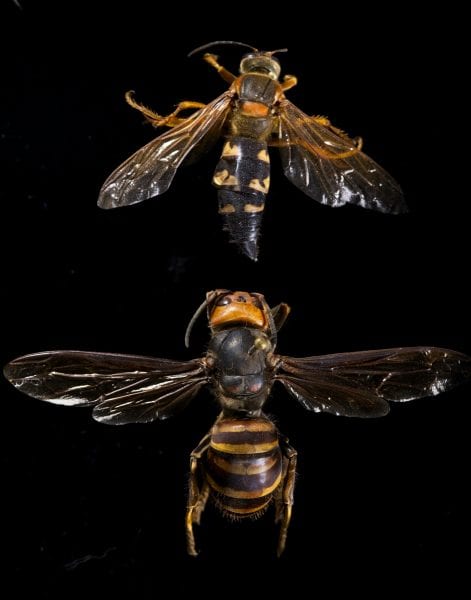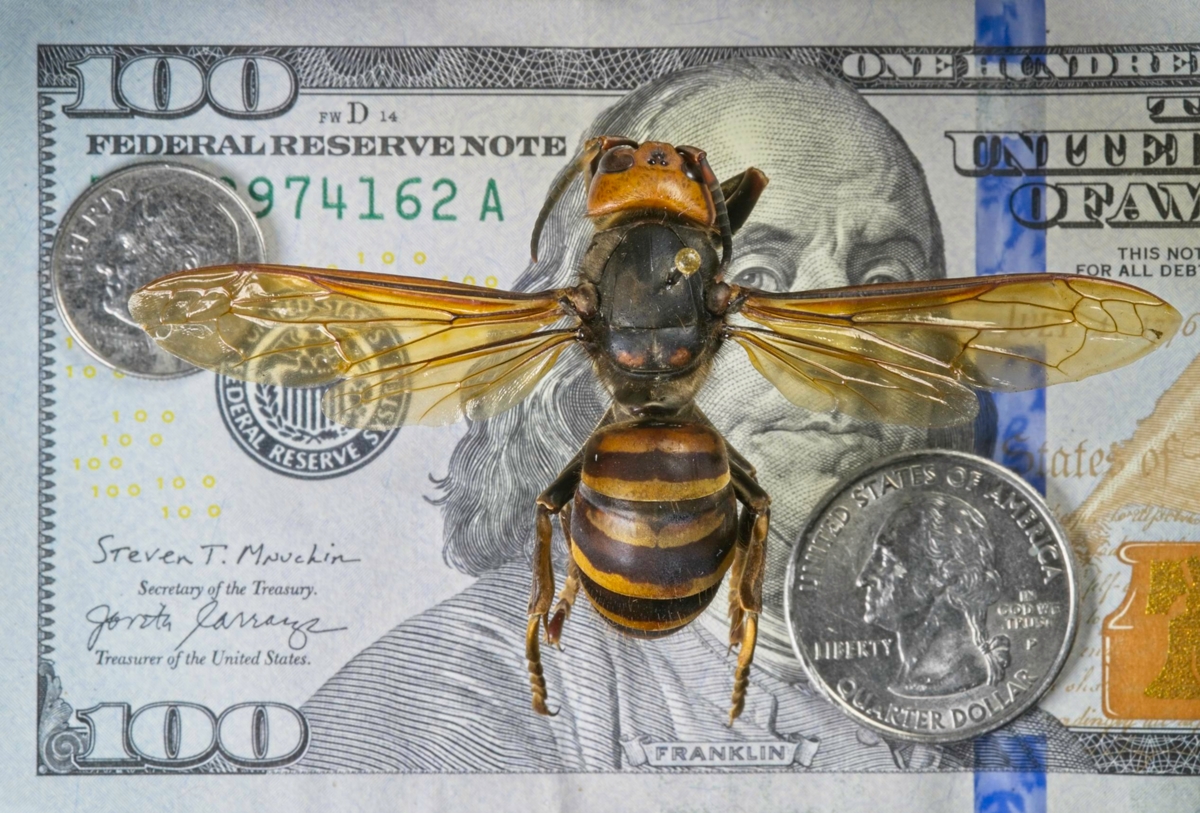Bees & Pollinators

In July 2020, the Washington State Department of Agriculture (WSDA) reported their first trapped Asian giant hornet. Learn more about this report in the WSDA’s virtual press conference. There is now work underway to search for hornet nests using infrared cameras. WSDA will also attempt to catch live hornets and track them to their colony for eradication. The WSDA, along with citizen scientists and cooperators, have an extensive trapping network to monitor for this hornet in the United States. Currently, there have been no Asian giant hornets found in Alabama or across the eastern United States. There are other large wasps in Alabama that are easily mistaken for the Asian giant hornet. The most common one is the cicada killer wasp, also known as the cicada killer.
Cicada Killers

Top: Cicada Killer Wasp
Bottom: Asian Giant Hornet
Just like its name suggests, the cicada killer is a predator of cicadas. Adult cicada killer wasps hunt cicadas to feed to their young. Extension professionals have seen a lot of adult cicadas emerge the last few weeks, therefore cicada killers may be active. They are typically found flying close to the ground searching for food. While cicada killers will create underground burrows in the ground, control is rarely required.
As adults, these wasps reach up to 1 inch in size. Because of their size, people often think they are harmful. However, these wasps are fairly passive insects that do not pose a threat to humans. Only female cicada killers are capable of stinging and will only do so if disturbed. The territorial males do protect their burrow, but are unable to sting.
Cicada Killer vs Asian Giant Hornet
Both cicada killer wasps and Asian giant hornets are large and can be mistaken for one another. However, the Asian giant hornet is the world’s largest, coming in anywhere from 1.5 to 2 inches. One way to tell the difference between a cicada killer and Asian giant hornet is by the colored stripes on their abdomen. Cicada killers have yellow stripes that are uneven and jagged in some places. The stripes on the Asian giant hornet are darker, usually orange or brown, and they are smoother across the abdomen.
The featured image shows the size of the Asian giant hornet.

